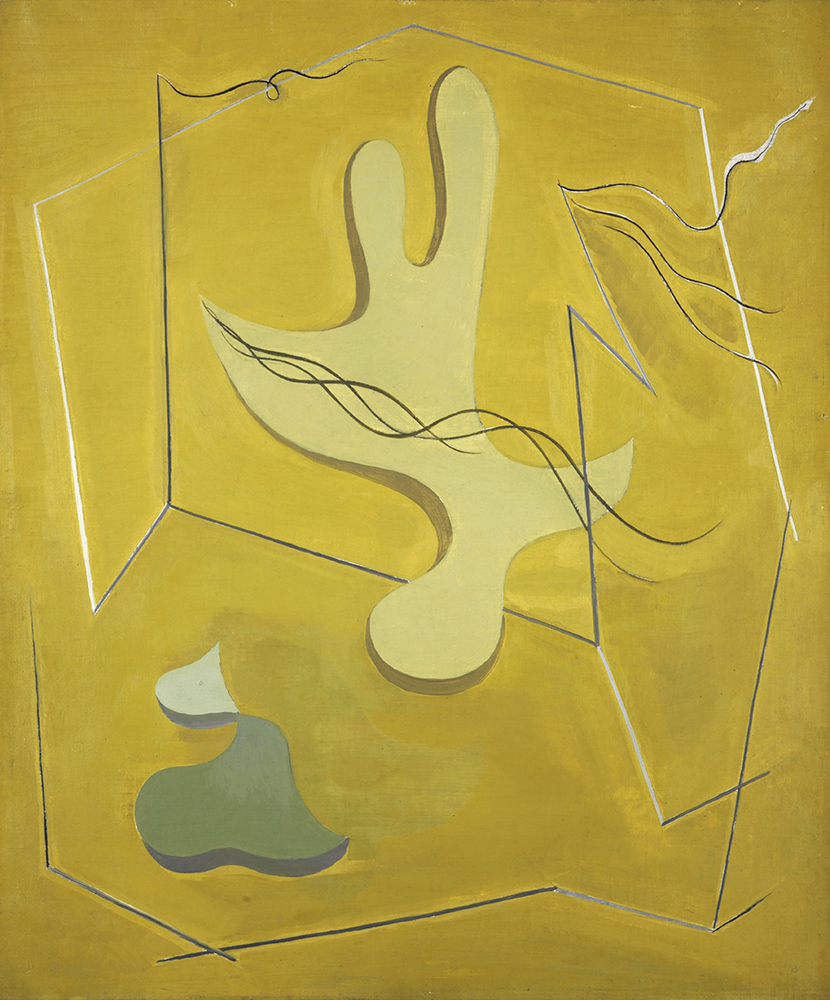PRESS RELEASE
ENGLAND & Co at FRIEZE MASTERS
in Modern Women
11–15 October 2023 | Regent’s Park, London
PAULE VÉZELAY (1892-1984) was a British-born, innovative abstract artist and active member of the Parisian avant-garde of the 1920s and 1930s – a pioneering artist of pre-war Paris who gradually withdrew from public view after returning to England in 1939.
Born Marjorie Watson-Williams, she moved to France in the 1920s and adopted the name Paule Vézelay as a way of committing herself to the School of Paris and her new life in France.
From 1929 to 1932, Vézelay lived with Surrealist artist André Masson, and mixed with many significant artists of pre-war Paris, including Kandinsky, Picasso, Miró, Mondrian, Jean Arp and Sophie Tauber-Arp. As a member of the group Abstraction-Création, she exhibited in major exhibitions of non-figurative art in the 1930s. Apart from early figurative works, wartime drawings, and a Surrealist period, she dedicated herself to the abstract movement. Her friend, the British artist Paul Nash, wrote in 1936 that Vézelay ‘contributed steadily to the modern movement’.
In post-war England, Vézelay worked industriously in her studio until the end of her long life. She designed textiles related to her abstract works and exhibited infrequently until her Tate Gallery retrospective exhibition in 1983, the year before her death. Vézelay – who remains relatively unknown internationally due in part to her change of name and a career divided between two countries – was interviewed at the time of her Tate exhibition by Dr Germaine Greer as the subject of a BBC film in the Women of our Century series.
England & Co have represented Paule Vézelay’s Estate since 1988 and interest in her work and acknowledgement of her achievements has greatly increased in recent years: Vézelay is now represented in numerous private and institutional collections, including Tate; British Museum; Imperial War Museum; National Portrait Gallery, London; Victoria and Albert Museum; Ashmolean Museum, Oxford; Pallant House Gallery, Chichester; Scottish National Gallery of Modern Art, Edinburgh; Kunst Museum, Basel; Australian National Gallery, Canberra; and the Arts Council of Great Britain. Works by Vézelay are currently on view at Tate Britain in the display ‘International Modern 1930-1940.
The Dictionary of Abstract Painting describes Vézelay as representing ‘the many-sidedness of art’, producing ‘painting, sculpture, collages, compositions with stretched strings, drawings, engravings’ of ‘elegant purity’, and this presentation, which is part of Modern Women at Frieze Masters, will feature these varied aspects of her practice.

